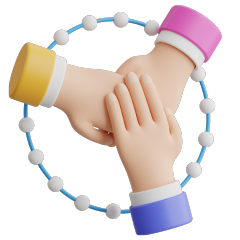What is a Supported Independent Living or SIL assessment and why might you need one?

Not everyone who has an NDIS plan needs a SIL assessment. But if someone requires daily support at home or is thinking about moving into a supported shared home, a SIL assessment becomes an essential part of the process.
Table of Contents
The National Disability Insurance Scheme (NDIS) makes it possible for people with disability to access the support they need to live, grow and participate in their community whether that’s through transport assistance, skill-building, employment opportunities or help at home.
One important type of support under the NDIS is Supported Independent Living (SIL). If you need daily support to live more independently, SIL funding might be part of your plan. And to figure out if it’s the right fit, a SIL assessment is often the first step.
What is Supported Independent Living?
Supported Independent Living or SIL is a support designed for people who need regular help with everyday tasks at home. This might include personal care, preparing meals, laundry or overnight support.
The goal of SIL is to help someone manage and build skills, increase confidence and make independent living feel possible and safe. SIL can be provided in a shared home or individual setting, and it works alongside other supports in your plan to help you move toward your goals.
Because SIL is considered a higher level of support, it’s typically available to people who have significant functional needs and require help throughout the day or night. But there are also other home and living options under the NDIS, so if SIL isn’t quite right, your planner or support coordinator can help you explore what else might be suitable.
What is a Supported Independent Living or SIL assessment?
A SIL assessment is a professional report that outlines the kind of help a person needs to live independently. It’s usually carried out by a qualified allied health professional, like an occupational therapist (OT), and it’s used to provide evidence to the NDIS that SIL is both reasonable and necessary for that individual.
During the assessment, the OT will look at the person’s current living situation, what supports they need to carry out daily tasks, and what their goals are now and in the future. The assessment focuses on functional capacity, supervision needs and the level of risk if supports are not in place.
The result is a detailed report that the NDIS uses to decide whether SIL funding is appropriate, and if so, what level of support should be included. It’s a document that gives the participant, their support coordinator, service provider or NDIS planner a detailed picture of what their current situation is, what support is already in place ,and what would need to be there for things to work better not just physically, but emotionally, socially and practically.
Who might need a SIL assessment?
Not everyone who has an NDIS plan needs a SIL assessment. But if someone requires daily support at home, or is thinking about moving into a supported shared home, a SIL assessment becomes an essential part of the process. It’s also important when NDIS plans are being reviewed, or when someone’s situation has changed. For example, if their needs have increased or they’re planning to move out of the family home for the first time.
In some cases, people don’t realise they’re eligible for SIL supports until they go through this process. That’s why it’s important to have the right guidance and to understand what the assessment is meant to do.
How does the NDIS use a SIL assessment?
SIL funding isn’t guaranteed as it is based on individual need. That’s why the SIL assessment is so important because it helps show how the person’s needs align with SIL and if the support will help them build capacity, reduce risk and live more independently.
The NDIS considers whether SIL will help the participant:
- Work toward their goals
- Build or maintain their independence
- Reduce the need for other types of support
- Improve relationships and community participation
The assessment also supports the creation of a roster of care which maps out when support workers are needed and what types of assistance they’ll provide.
What supports can be funded under SIL?
It’s important to note that SIL funding doesn’t cover everyday living costs like rent, food or utilities. Instead, it covers the cost of support workers who assist with tasks such as:
- Personal care and hygiene
- Meal preparation and support at mealtimes
- Household tasks like cleaning or laundry
- Overnight supervision
- Medication management
- Behavioural or emotional support, where needed
The level of support will vary depending on the individual’s needs, the setting they live in and the supports already in place.
Related article: What the new NDIS funding periods mean for you
SIL assessments vs. functional assessments
They’re related, but not quite the same. A functional assessment looks at what a person can and can’t do. A SIL assessment, on the other hand, focuses more specifically on the supports needed at home to live safely and as independently as possible.
Sometimes they’re done together, which can be helpful for building a more complete picture. But SIL assessments have their own purpose especially when it comes to planning accommodation and long-term support.
Under the new legislation, the NDIS Review recommended the use of needs assessments to help decide how much support funding they get. This assessment must focus on the support needs that come from the condition or disability they were approved for under the NDIS.
So, if someone has both a physical and a mental health condition (e.g., psychosocial disability) but was only approved for the NDIS because of their physical condition, the assessment should only look at the support they need for their physical condition.
Where support providers come in
At Leora Healthcare, we believe a good SIL assessment doesn’t start with paperwork, it starts with listening. We work closely with participants, families and care teams to help make the process feel clear and respectful. That includes supporting you to organise the right kind of assessment, helping you understand what to expect and making sure your preferences and needs are heard throughout.
For us, the goal is not just to tick boxes, it’s to make sure you have the kind of support that helps you feel safe, included and empowered in your home life.





